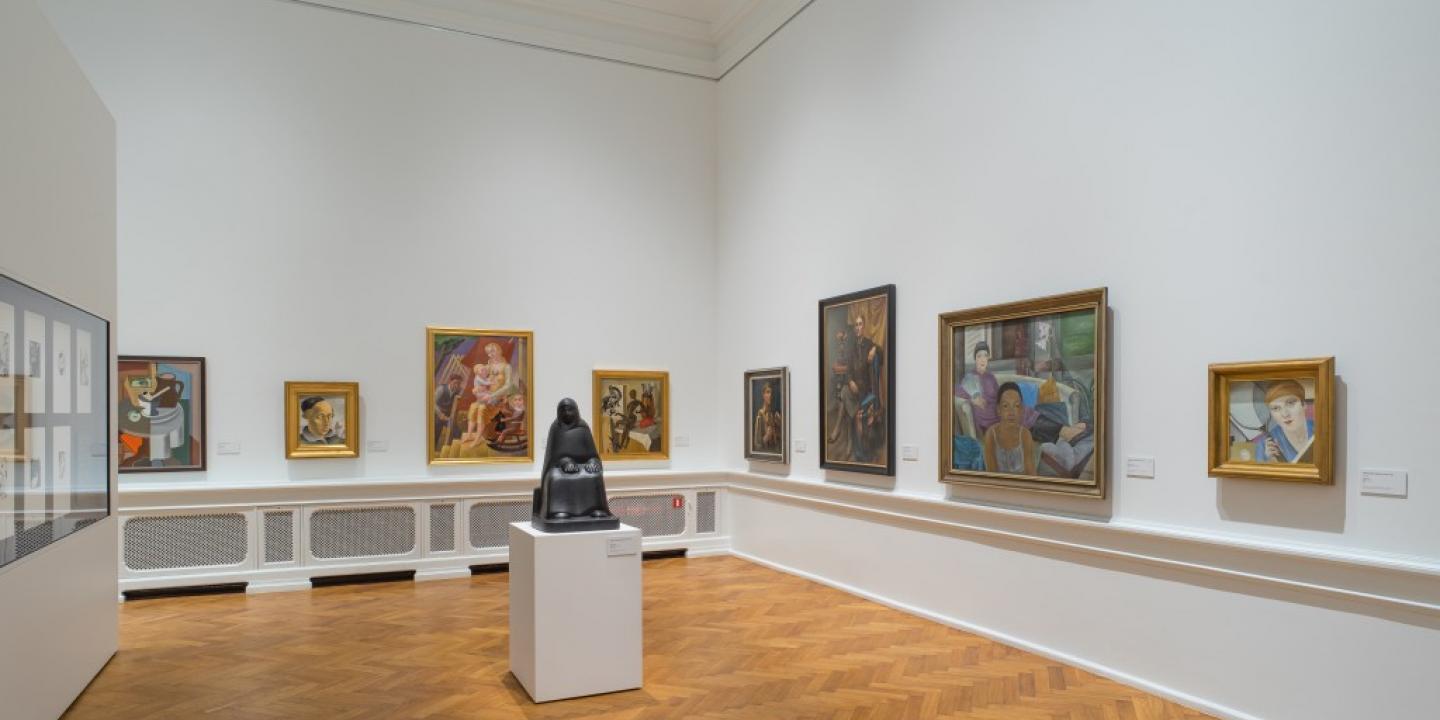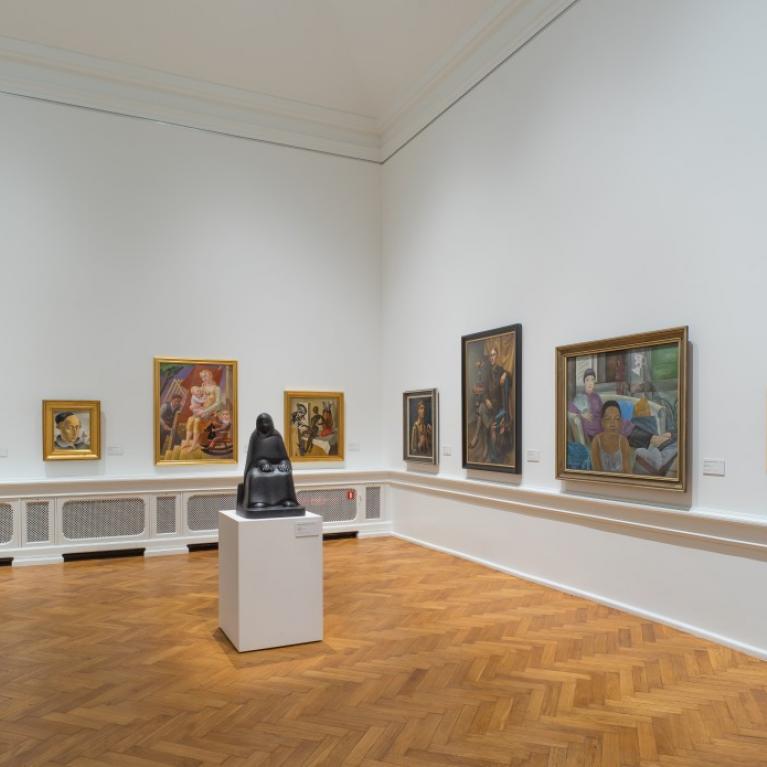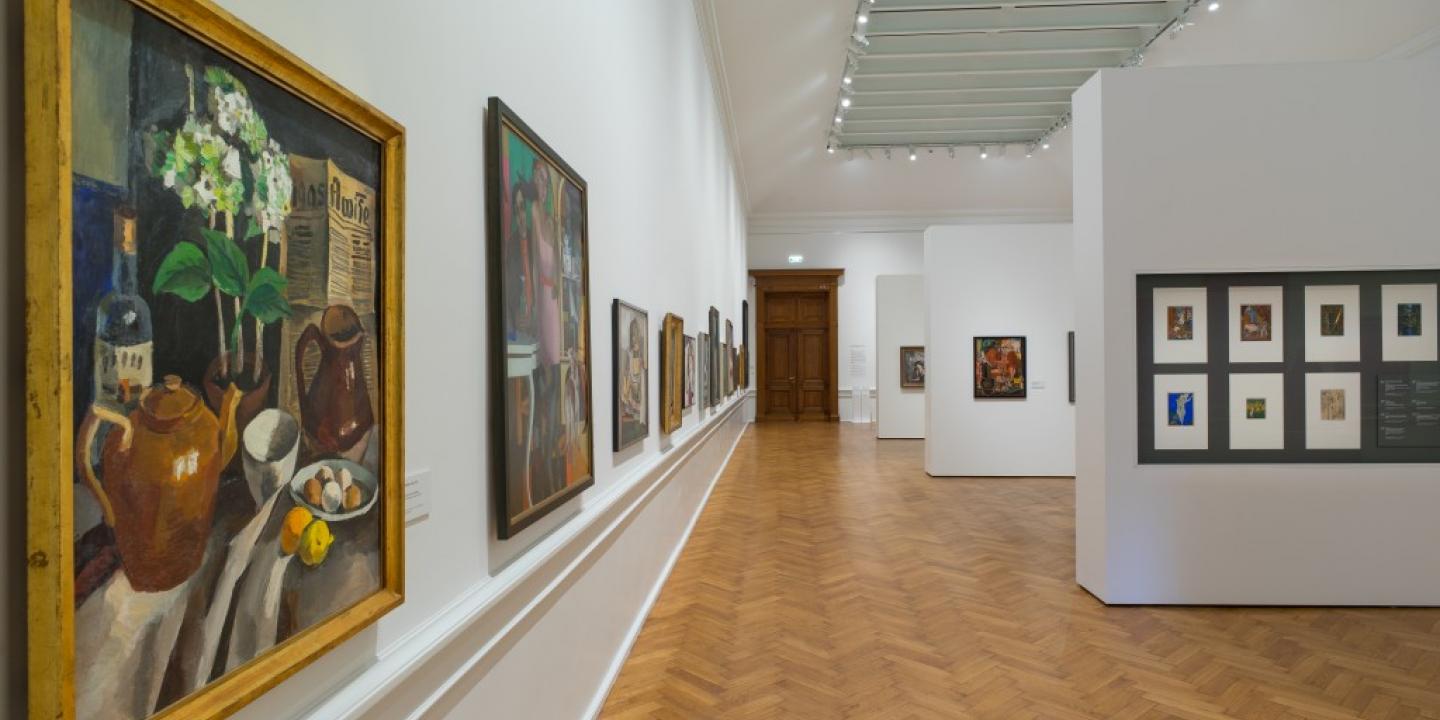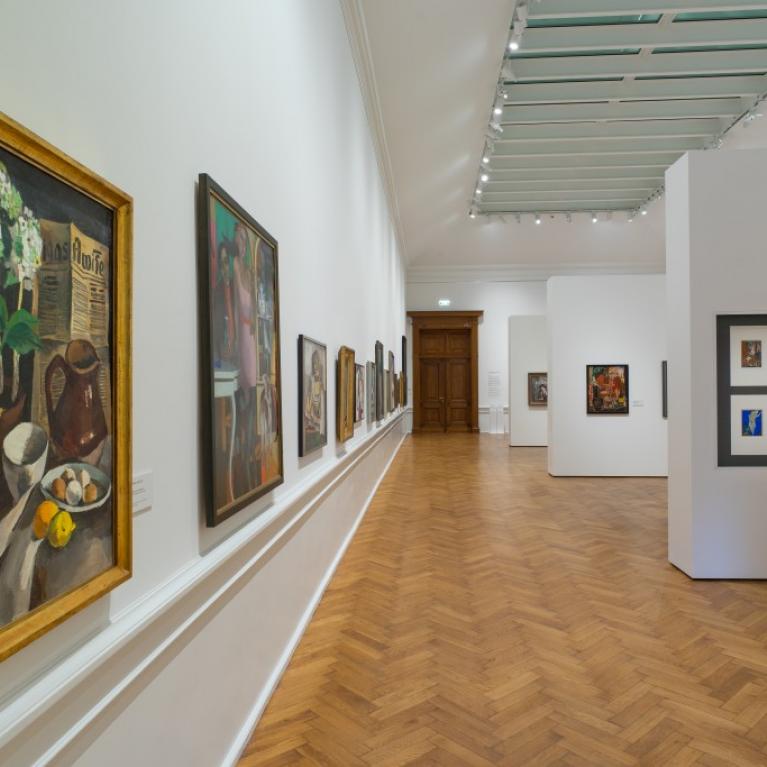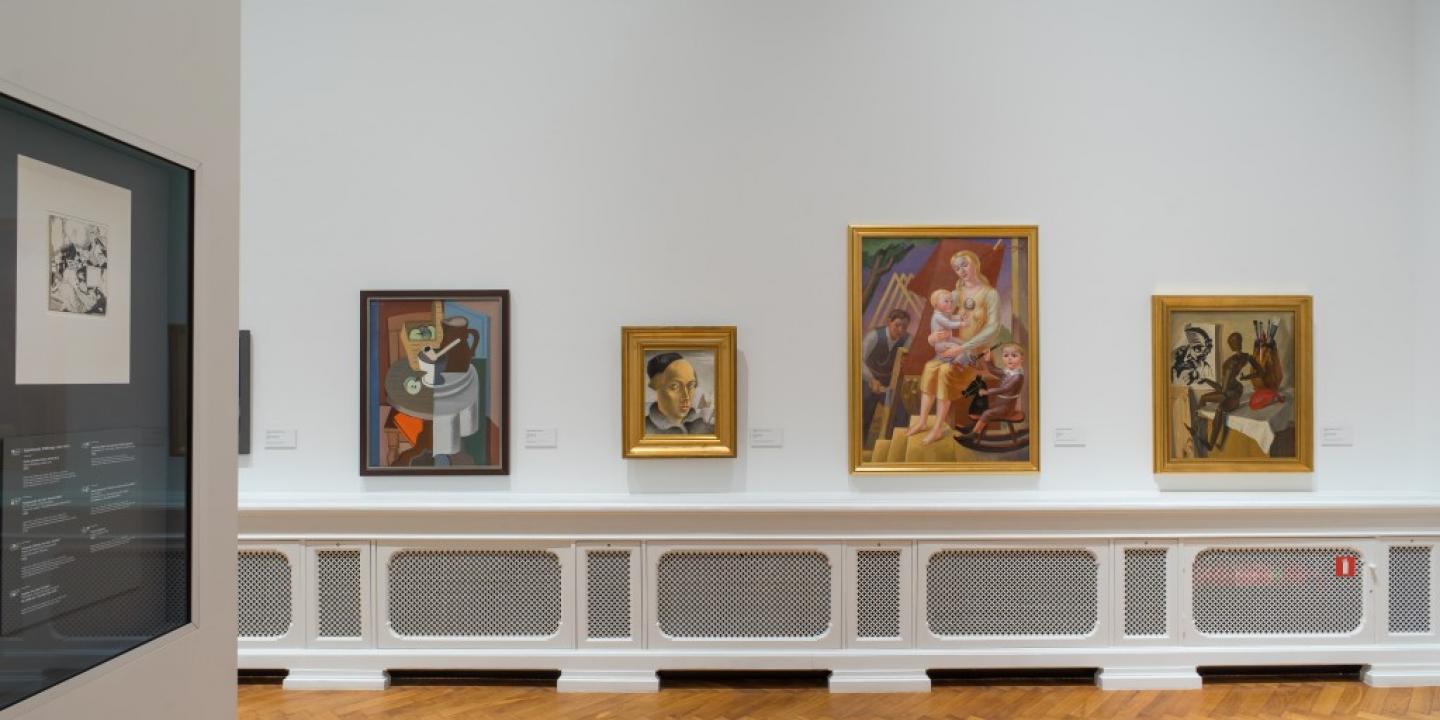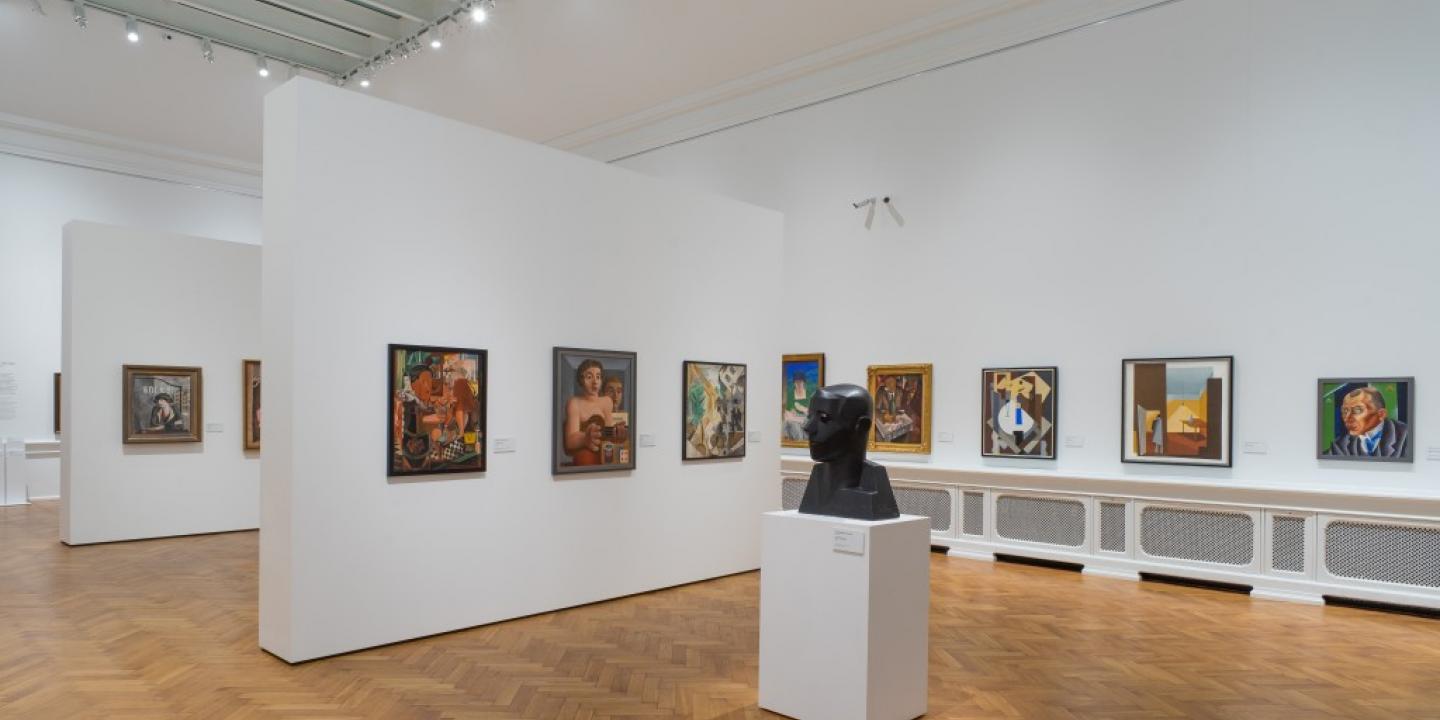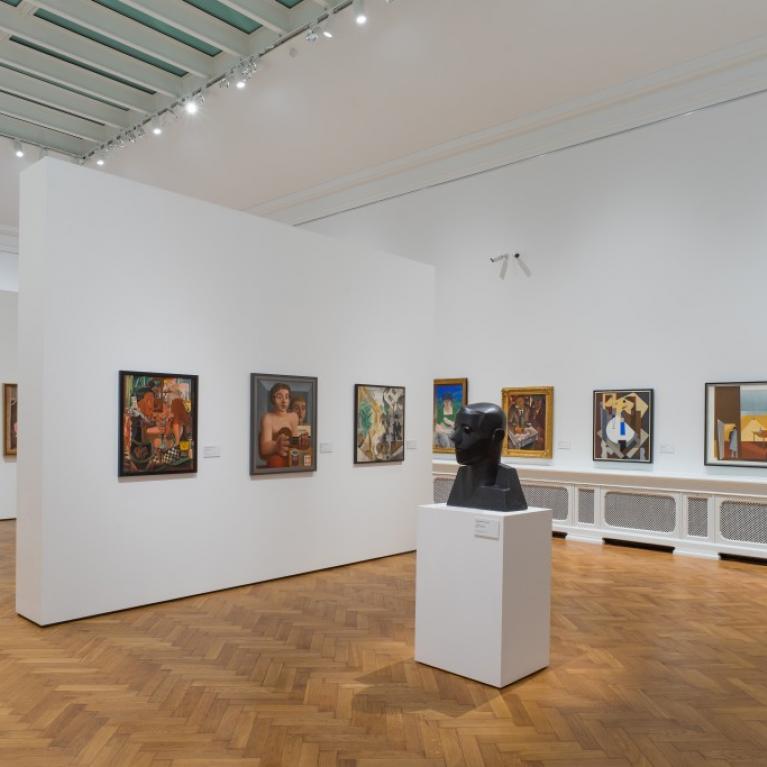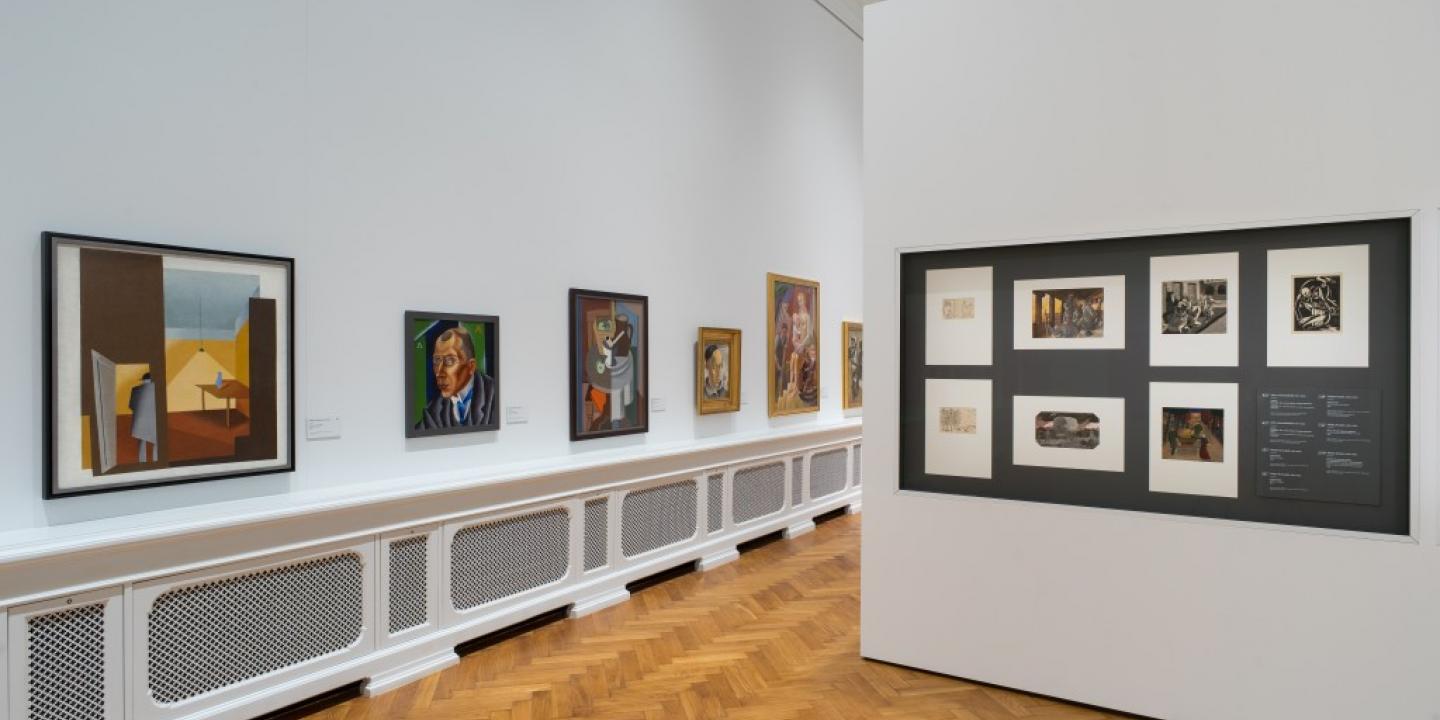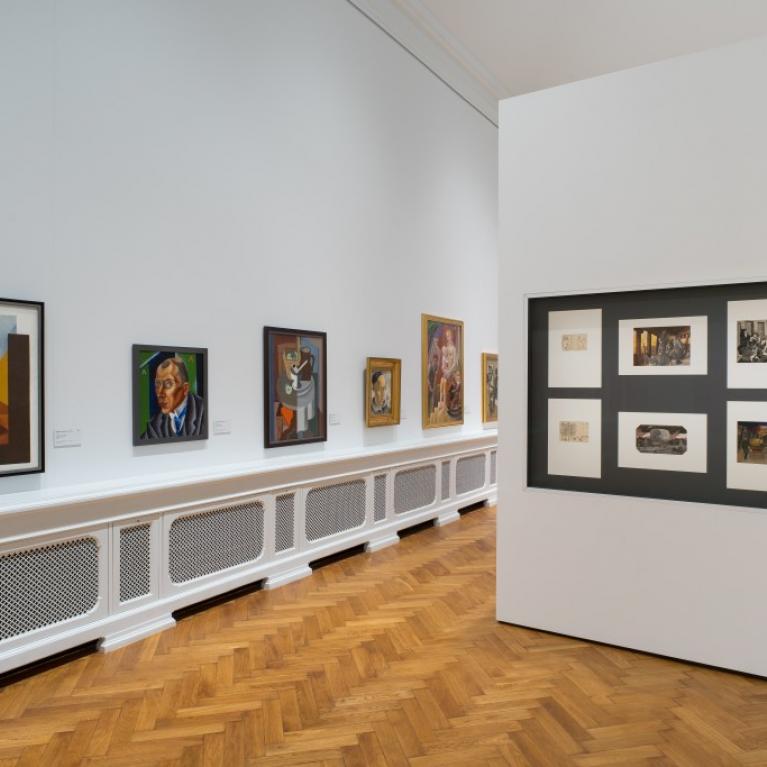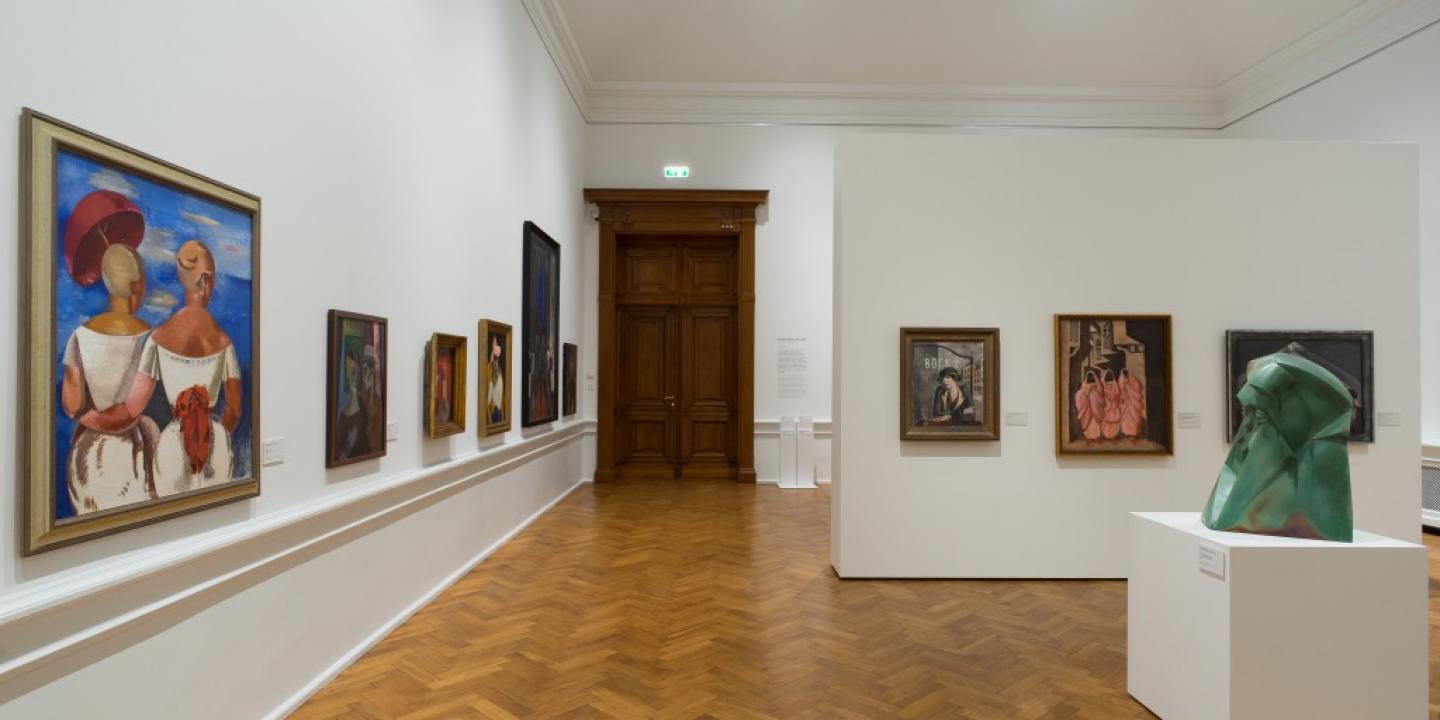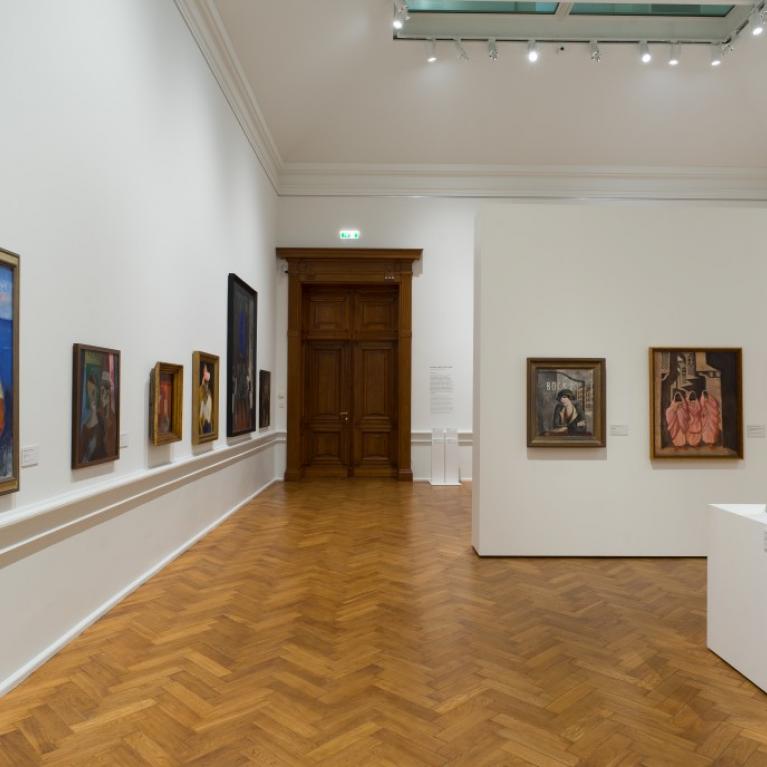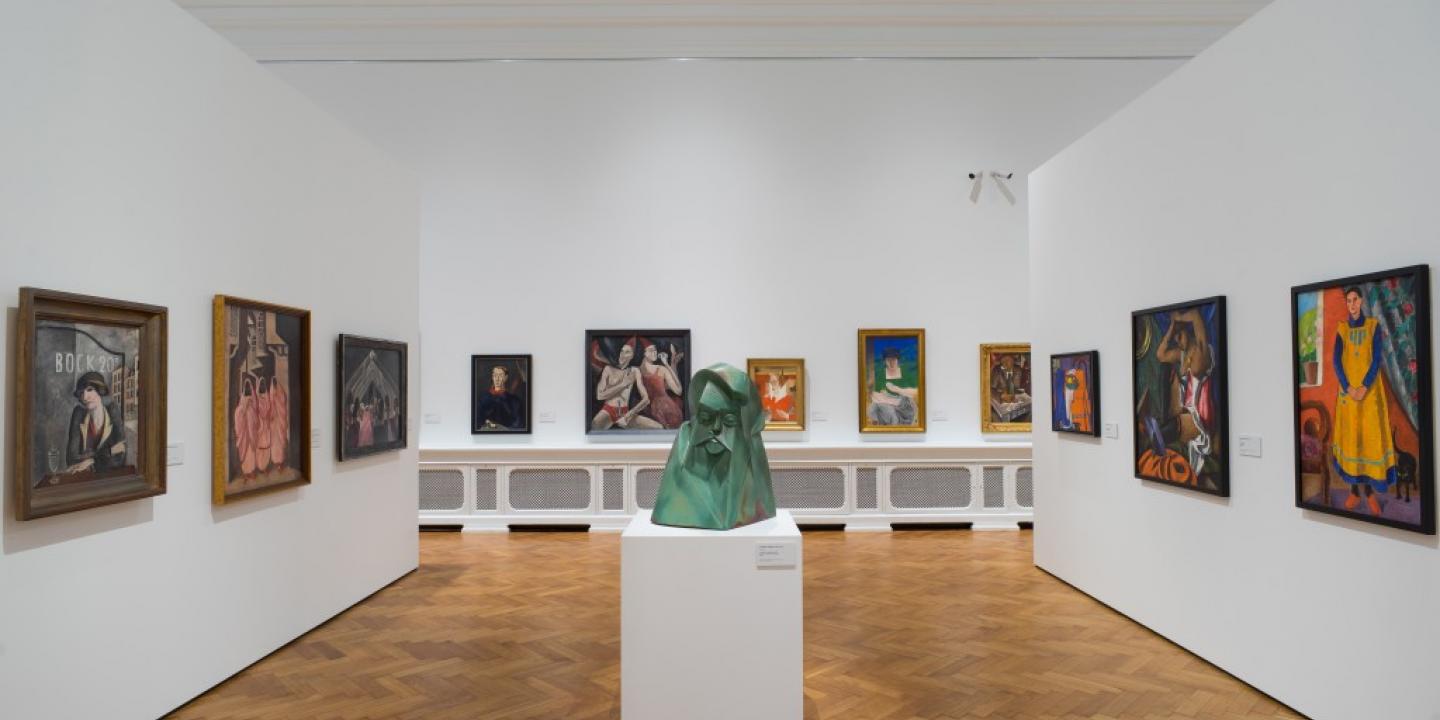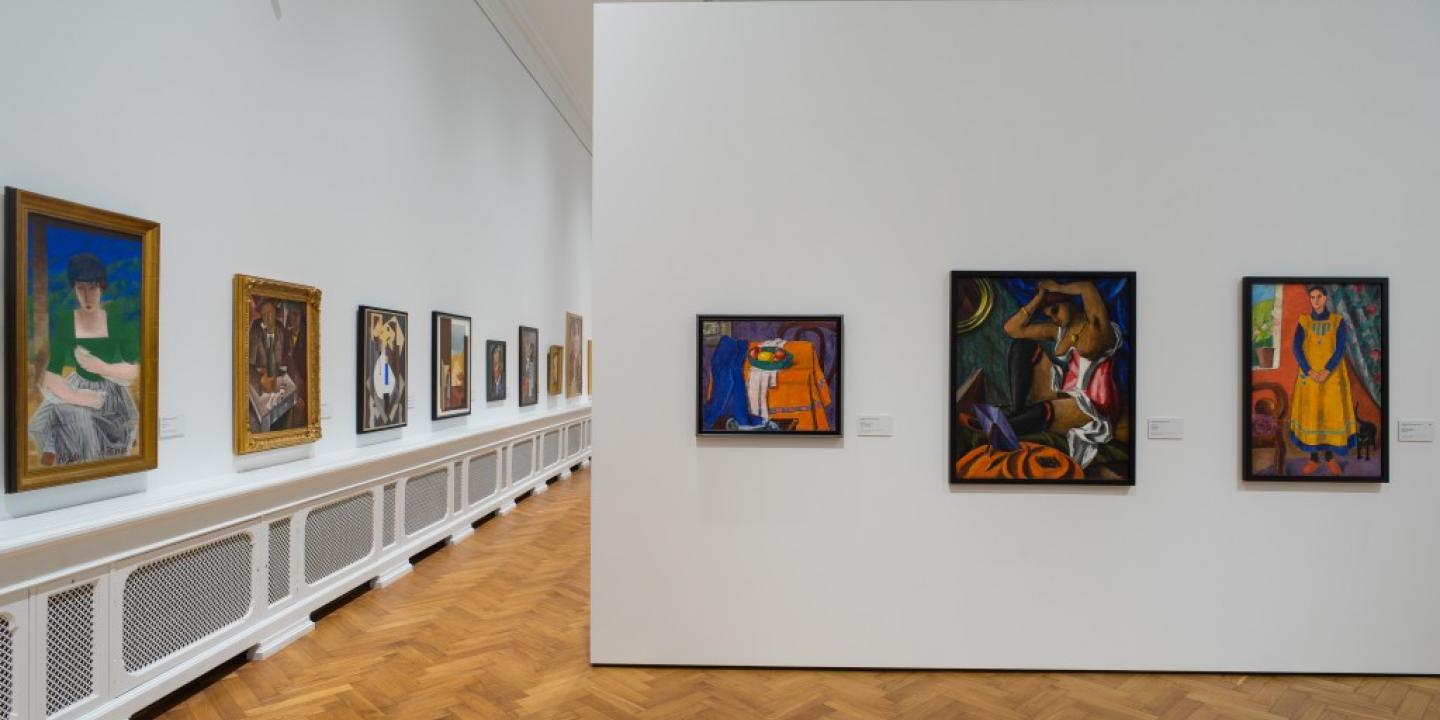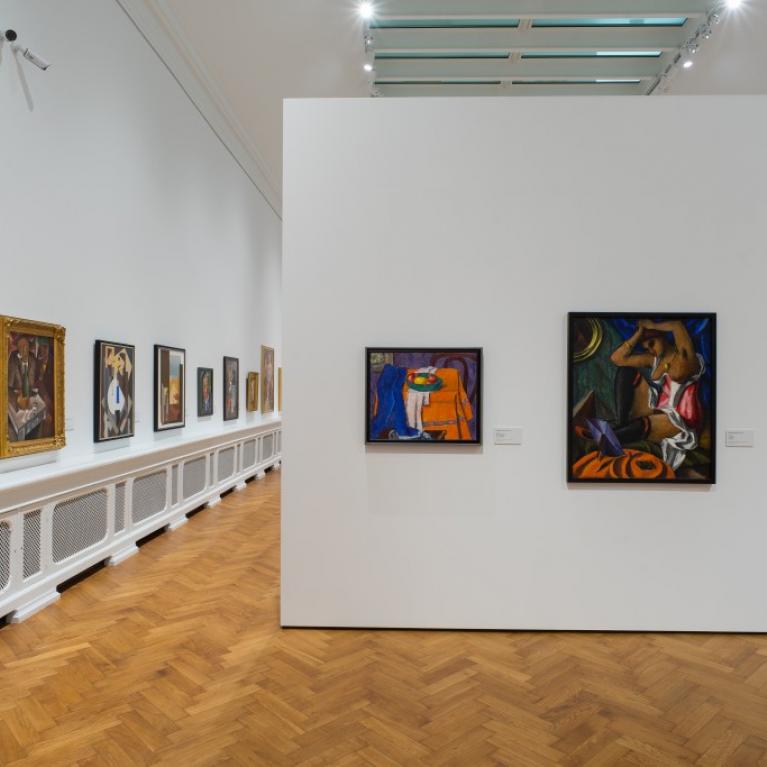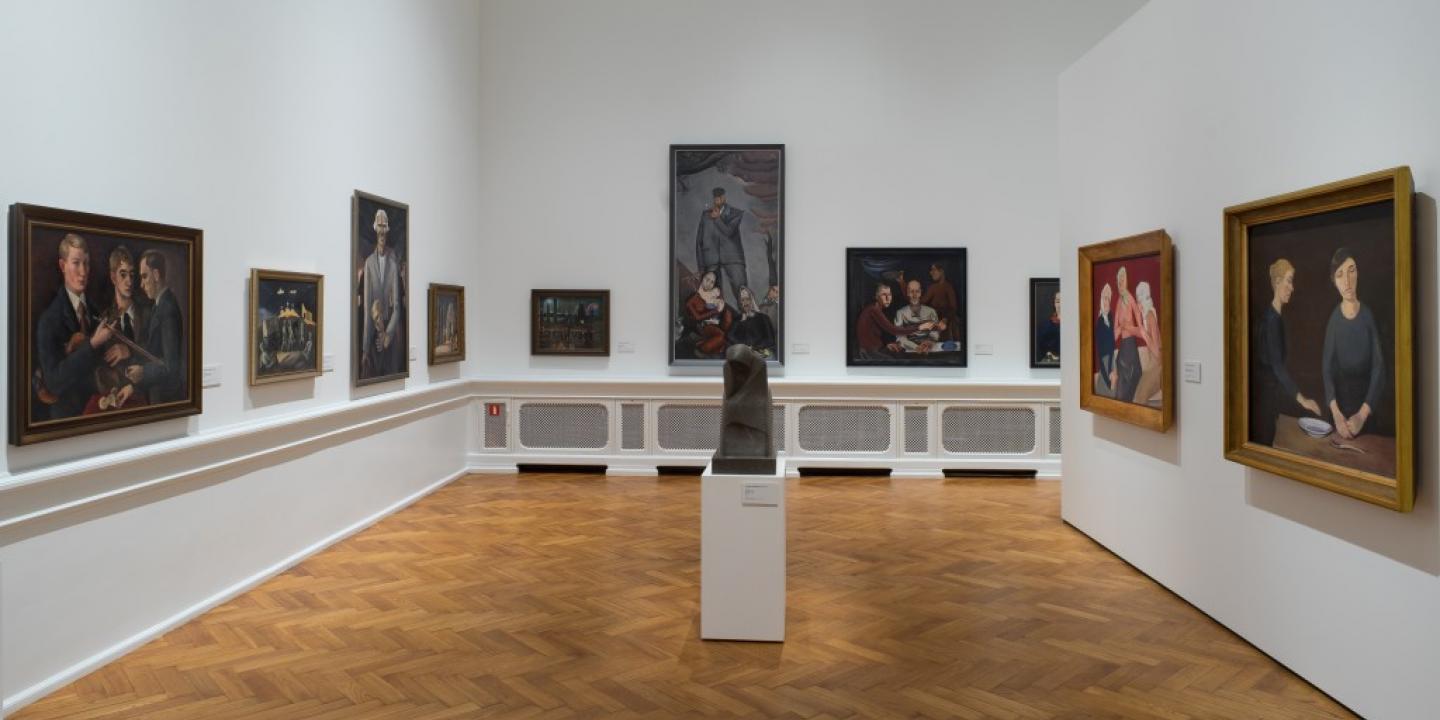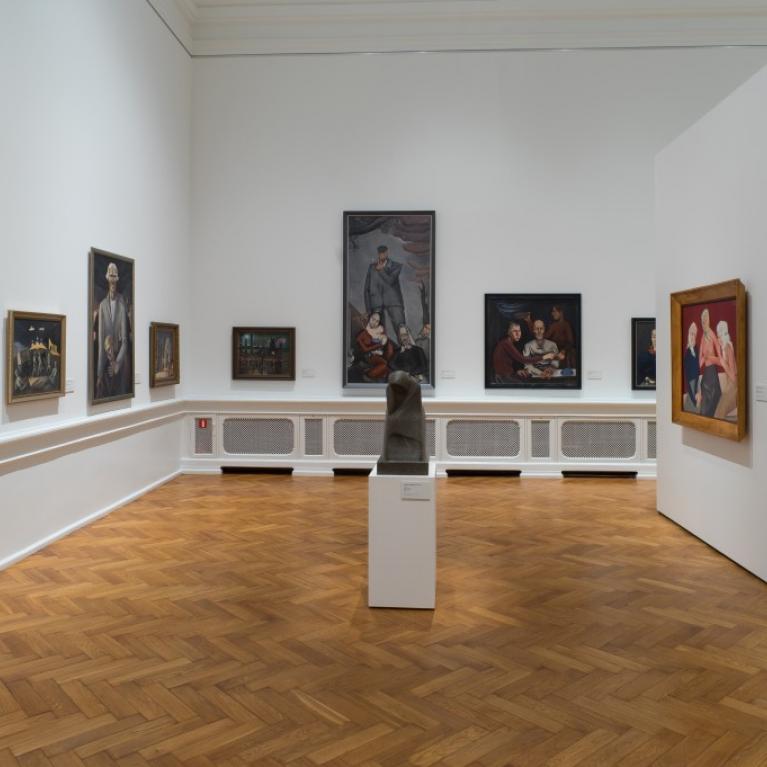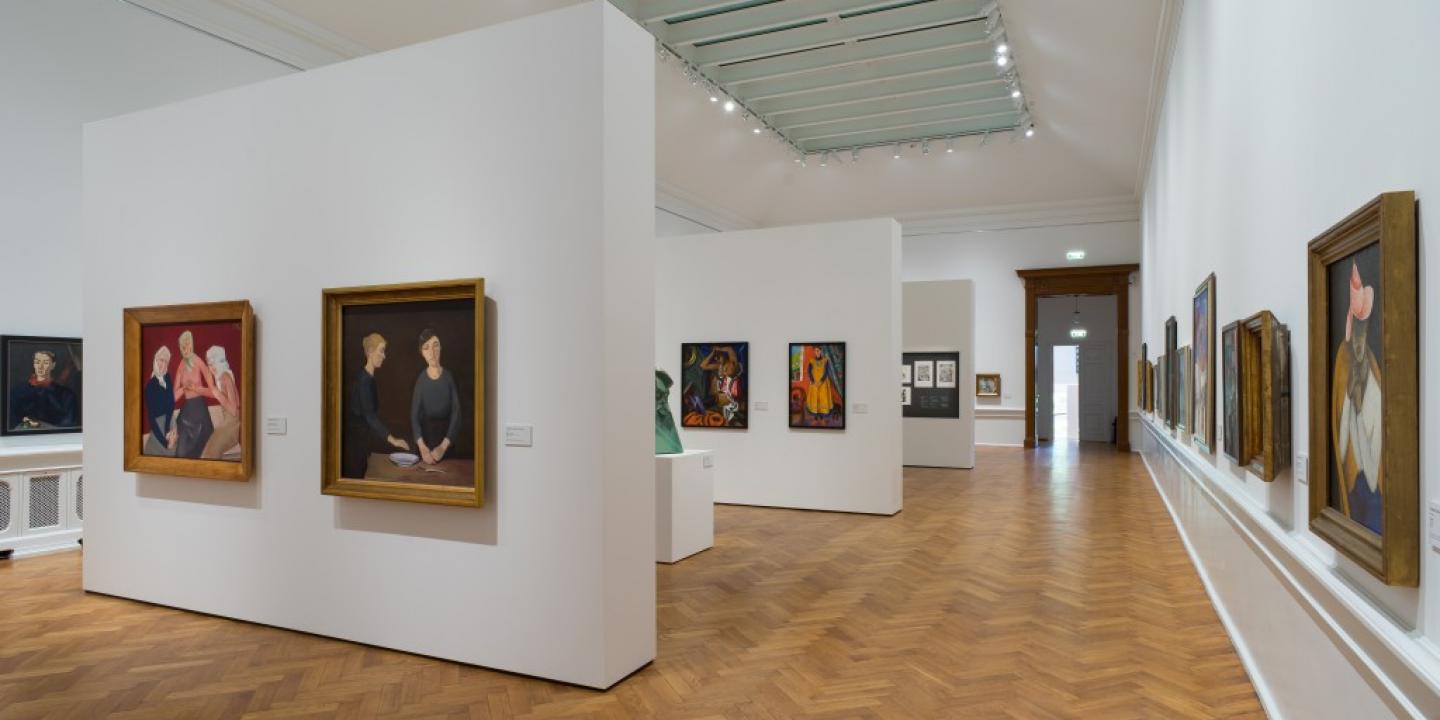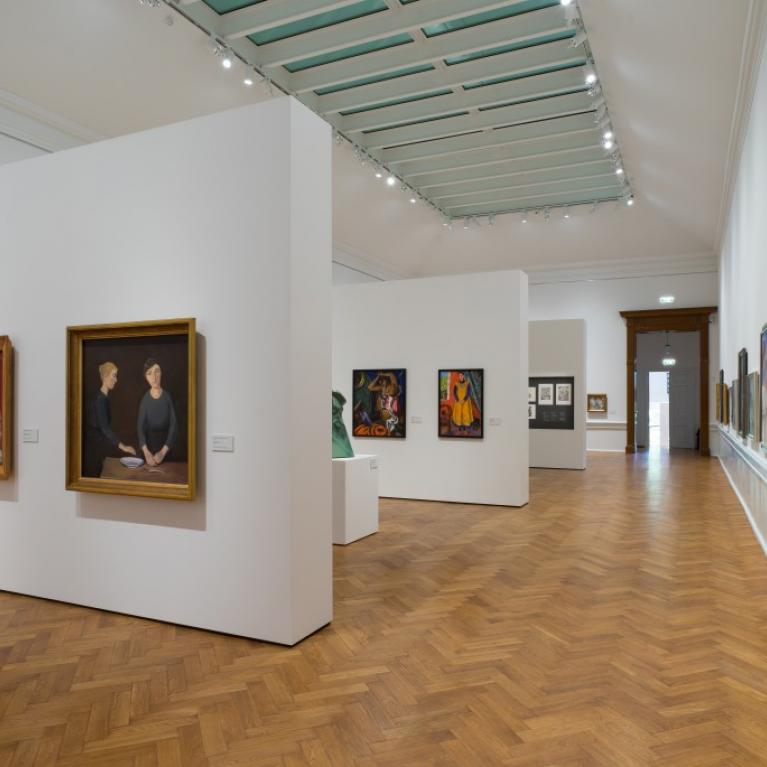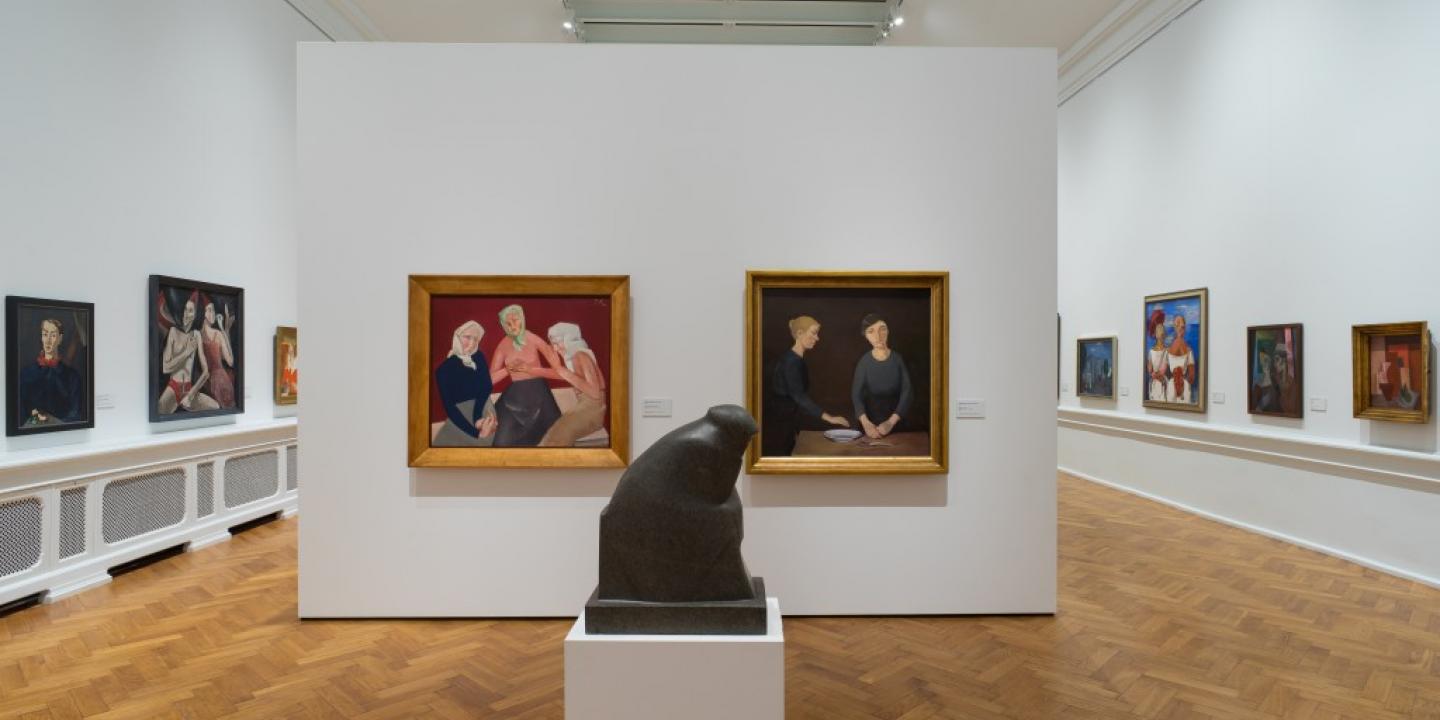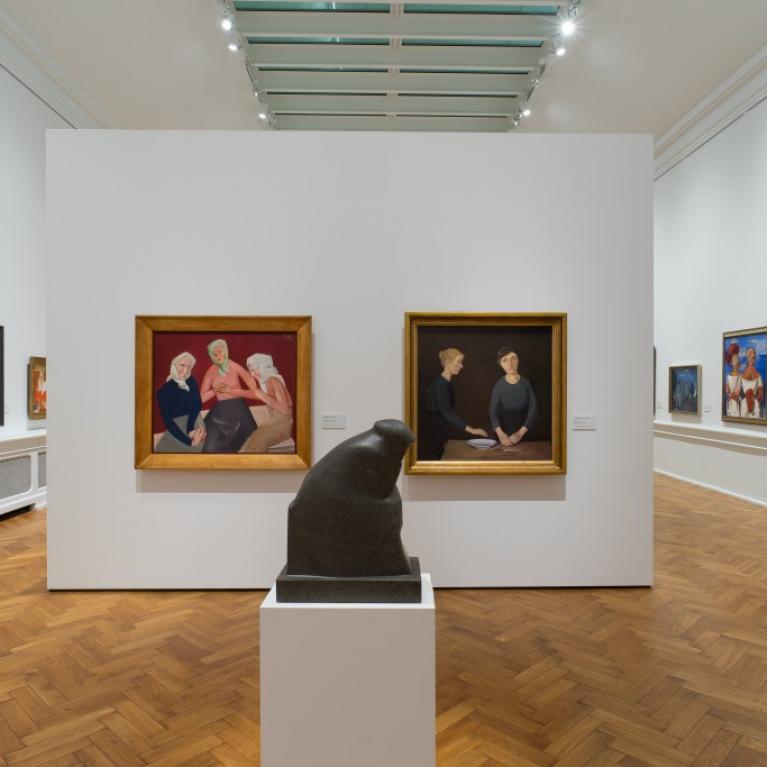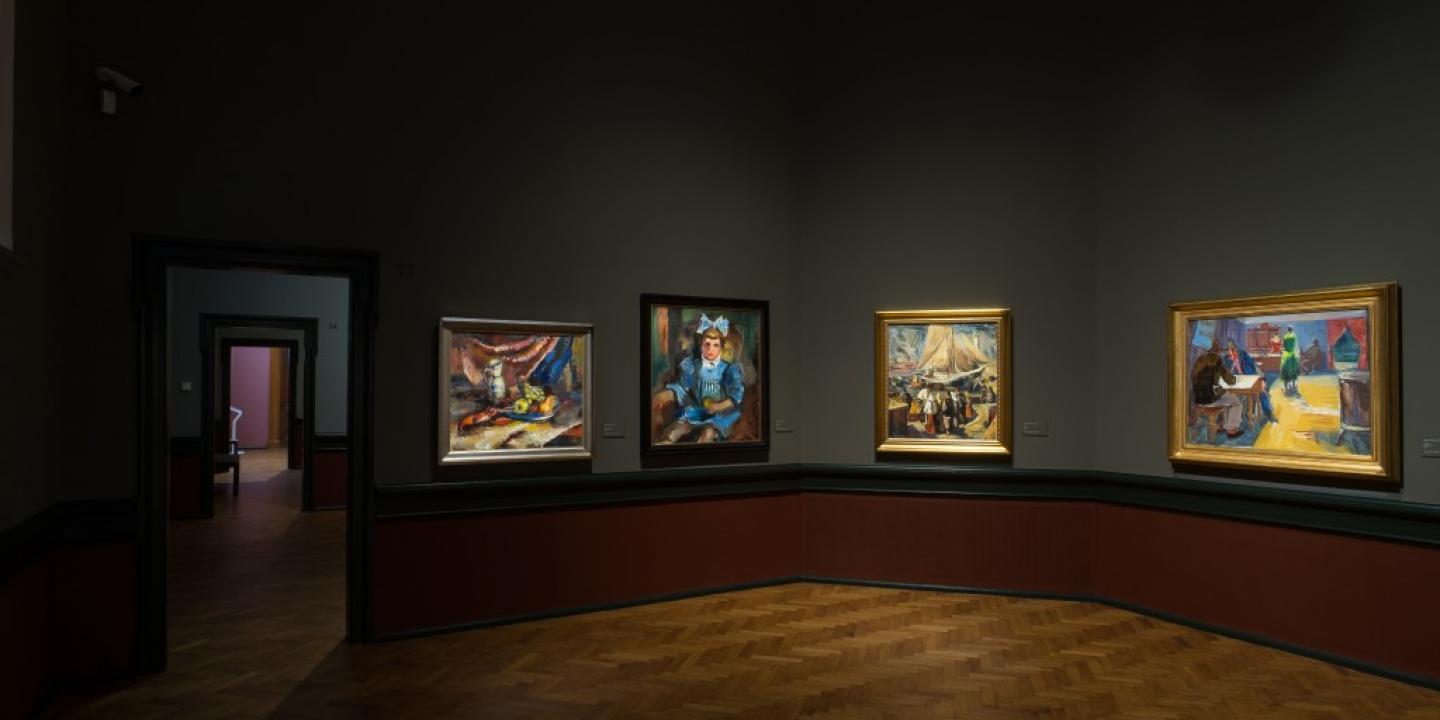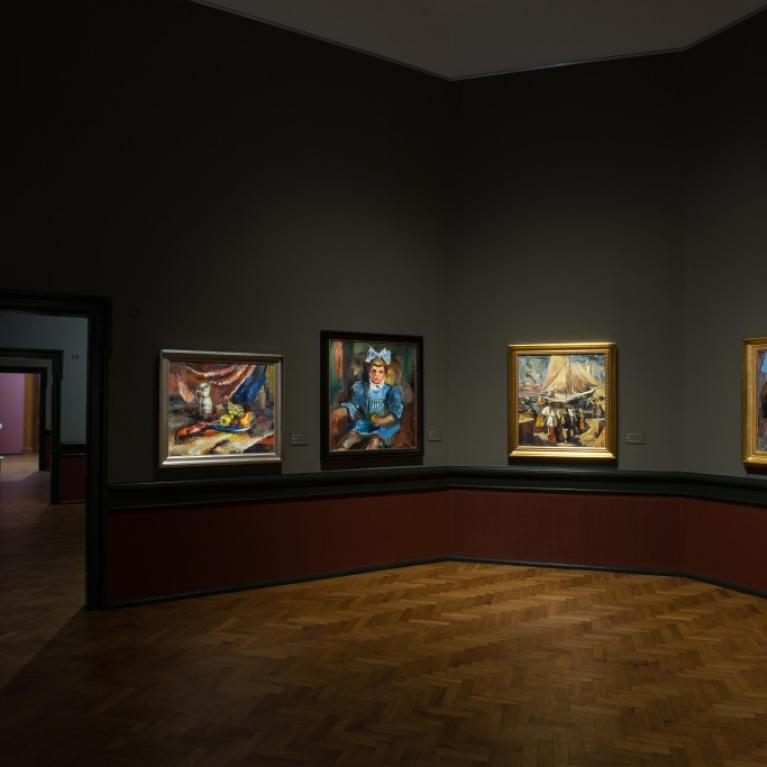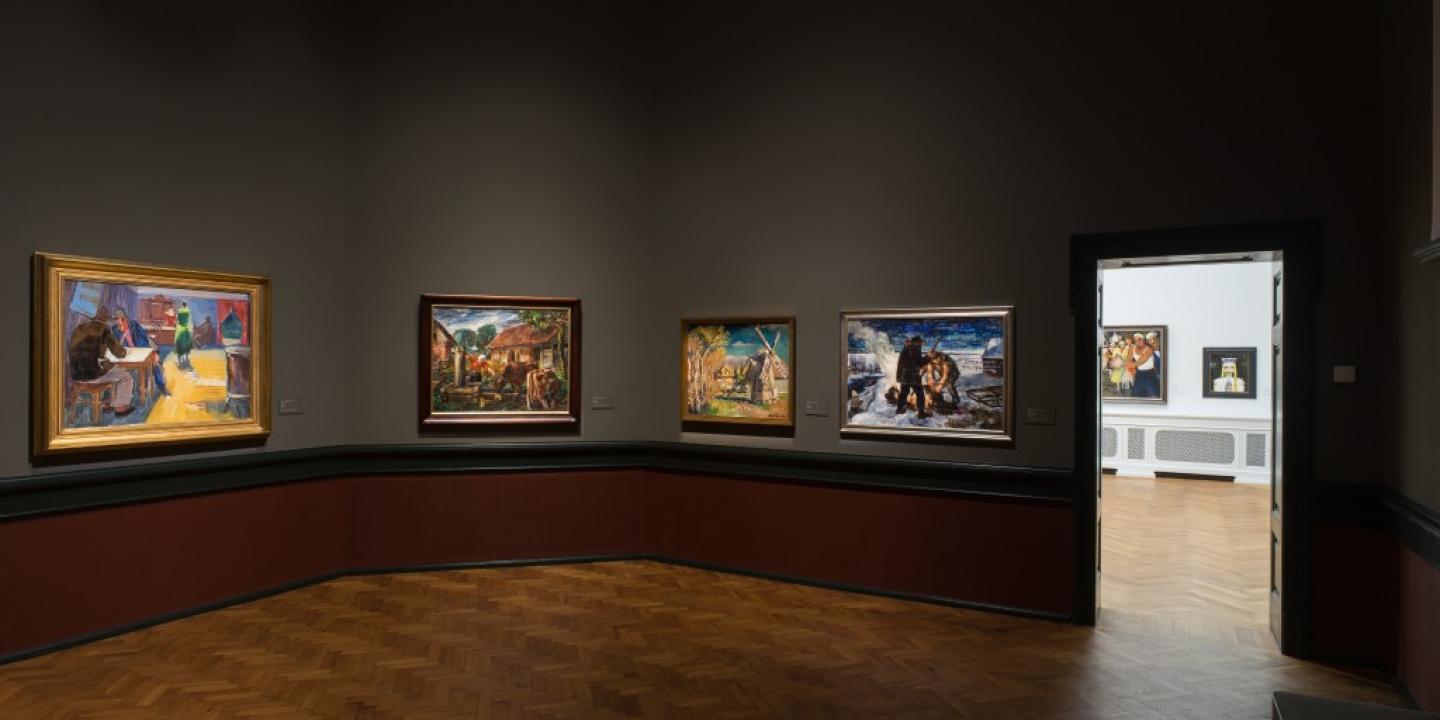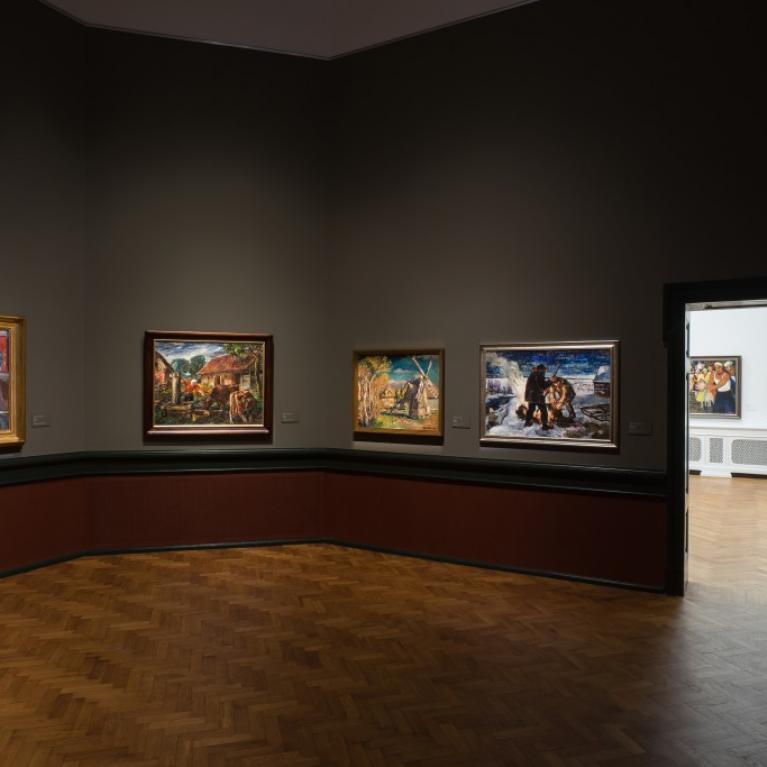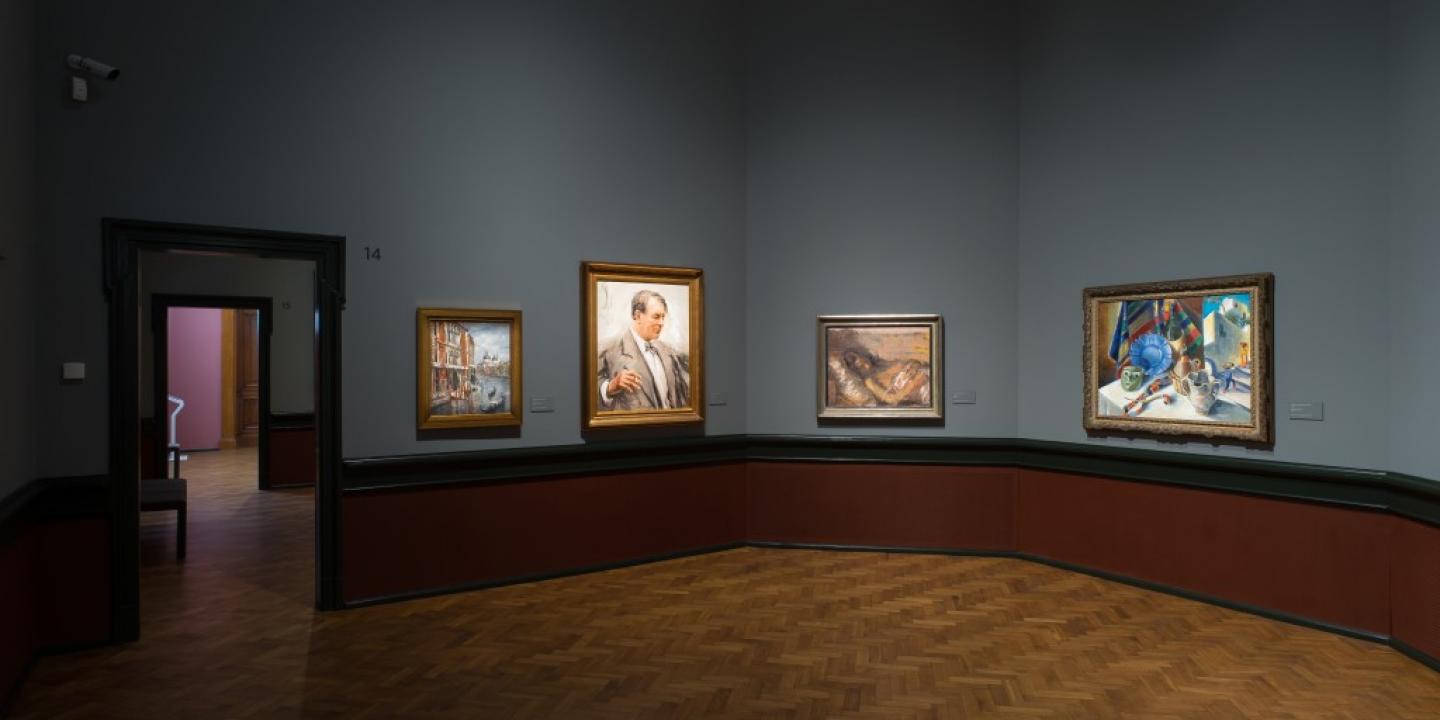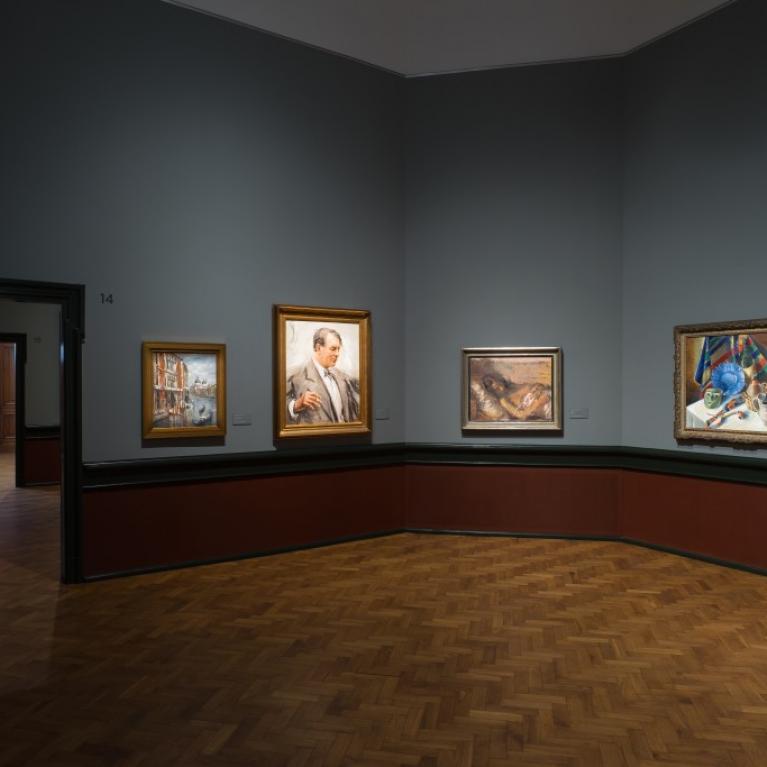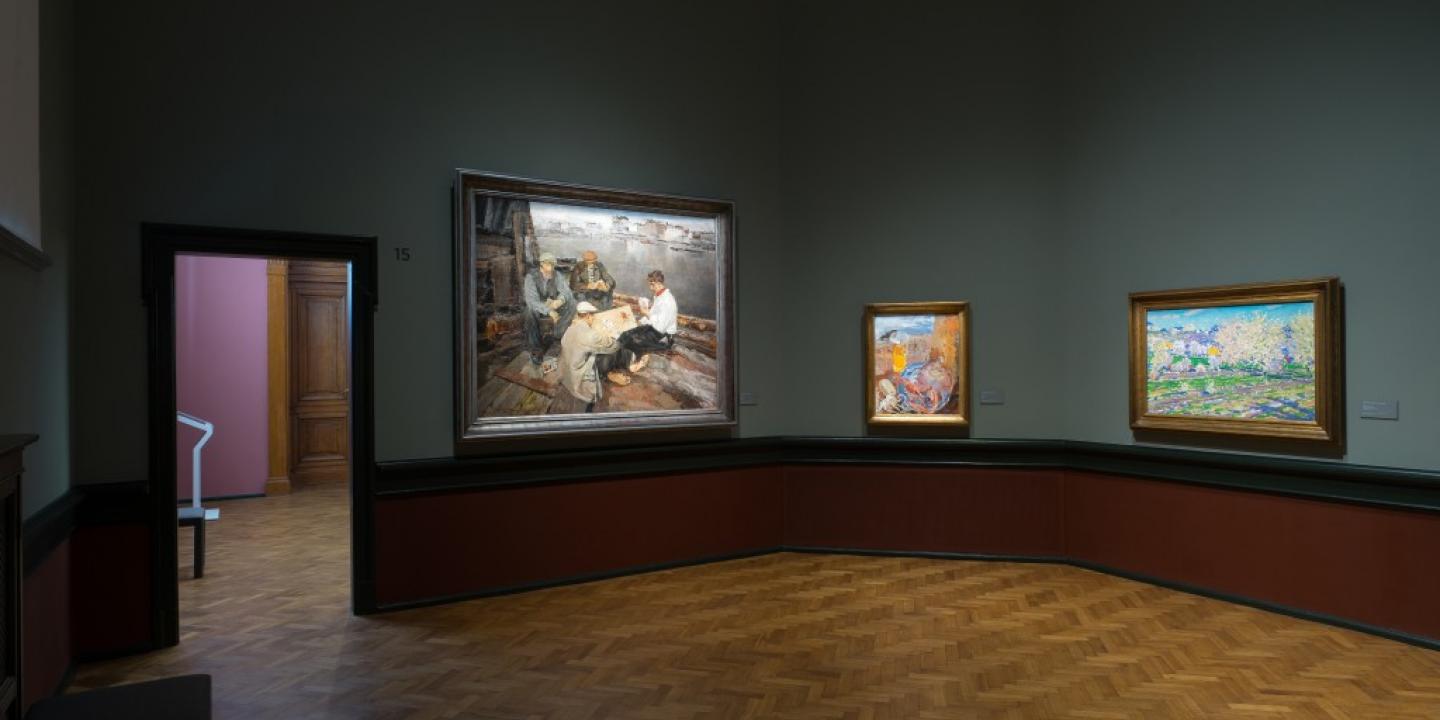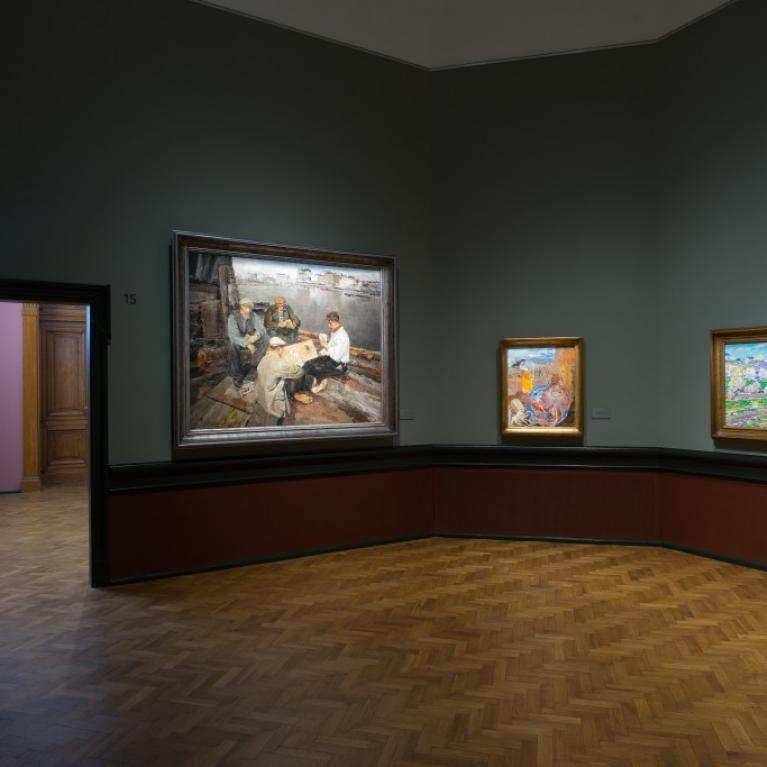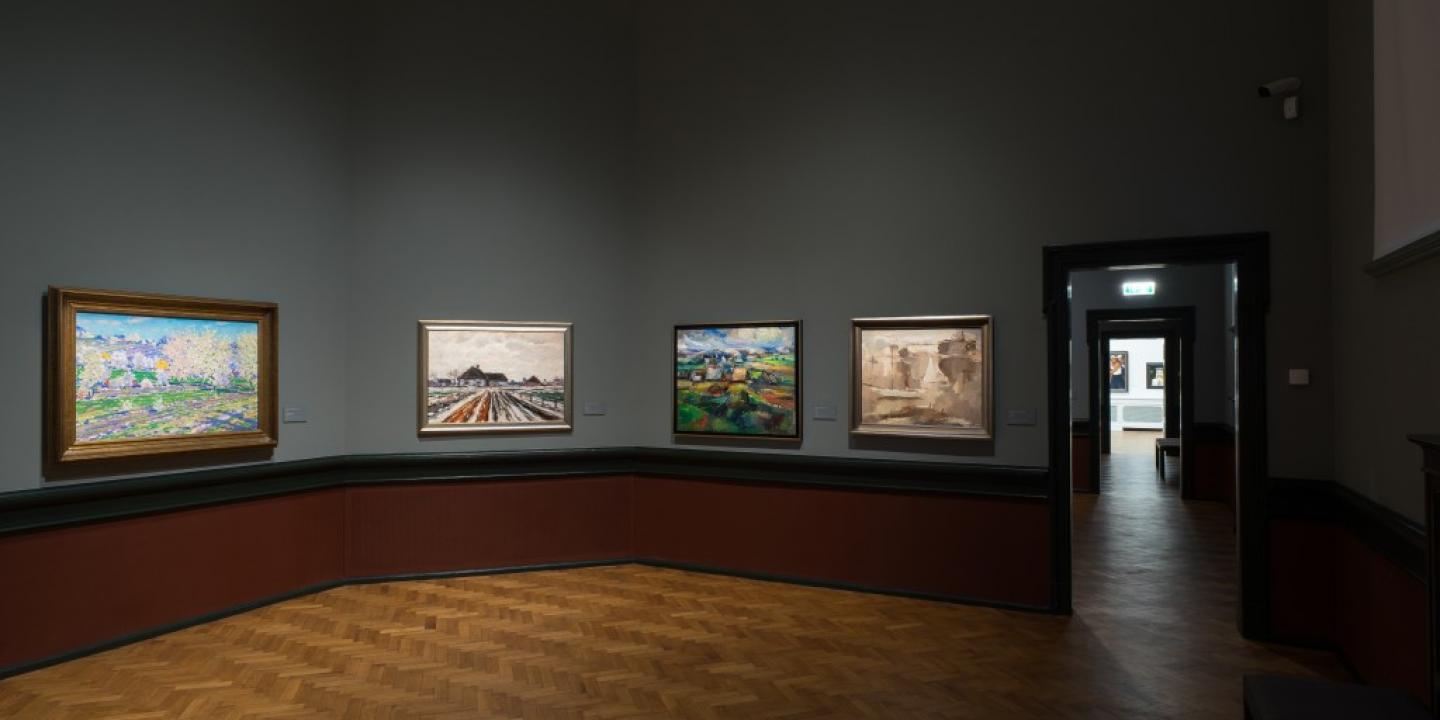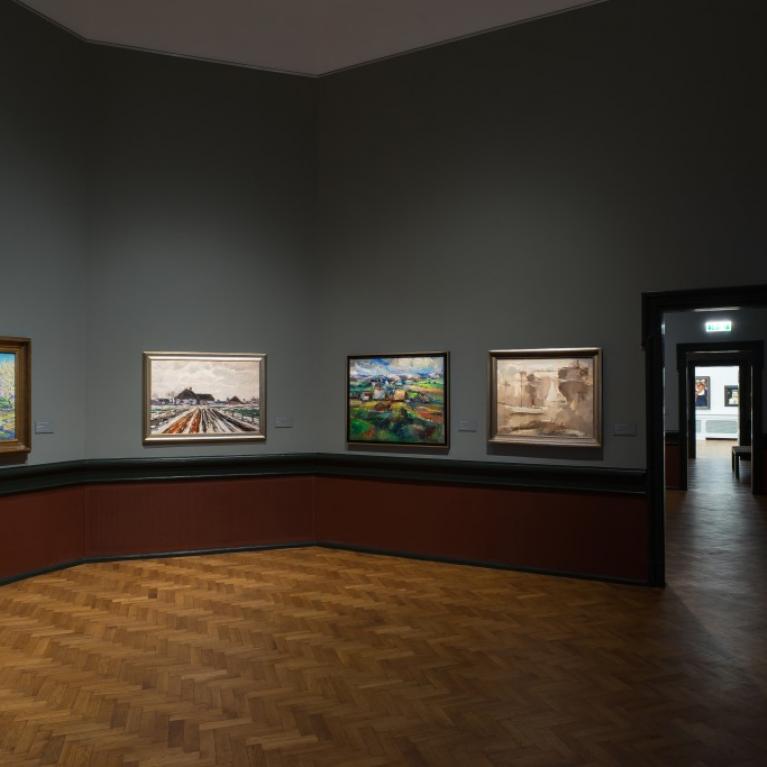Latvian Art 1915–1940
World War I brought difficult challenges for the Latvian people, which inspired a strong wave of national self-consciousness in artists. Jāzeps Grosvalds was the first to take up the pressing subject of refugees and riflemen in painting. Jēkabs Kazaks, who was significantly influenced by contemporary French painting, also turned to depiction of the dramatic historical events.
In the first post-war years many artists became interested in the movements of Modernism, especially Expressionism and Fauvism, but many were most influenced by Cubism. Oto Skulme, Valdemārs Tone, Jānis Liepiņš and Romans Suta took up geometrisation quite late – only around 1918, showing their innovatory explorations in the first exhibition of the Riga Artists' Group in 1920, which initiated the period of Classical Modernism in Latvia. In the mid-1920s, the influence of Cubism diminished and several authors on their path towards Realism turned to the movement of the New Objectivity. The art of drawing of the 1920-30s is demonstrated by Romans Suta, Sigismunds Vidbergs and the daring Kārlis Padegs.
In the 1930s, the innovatory experiments had been replaced by a tendency towards a realistic form of expression. Landscape became one of the favourite genres of painting. Konrāds Ubāns turned to a lyrical depiction of the outskirts of Riga, while Uga Skulme painted landscapes of Latvian countryside. Ģederts Eliass showed the working life of Latvian peasants in different seasons, while Jānis Liepiņš was the first to take up vital depiction of fishermen’s life around the Gulf of Riga. Leo Svemps is considered to be the initiator of the genre of the still life, whose canvases vividly reveal a natural gift for improvisation and a fresh perception of colour.
The granite works of Marta Skulme, Emīls Melderis and Teodors Zaļkalns stand out in the scene of sculpture of the 1920s and 30s. Zaļkalns' grey, rugged, granite Pig with its monolithic form and laconic expressivity has undeniably become the symbol of Latvian stone sculpture.
Explore art works on the Google Arts & Culture
